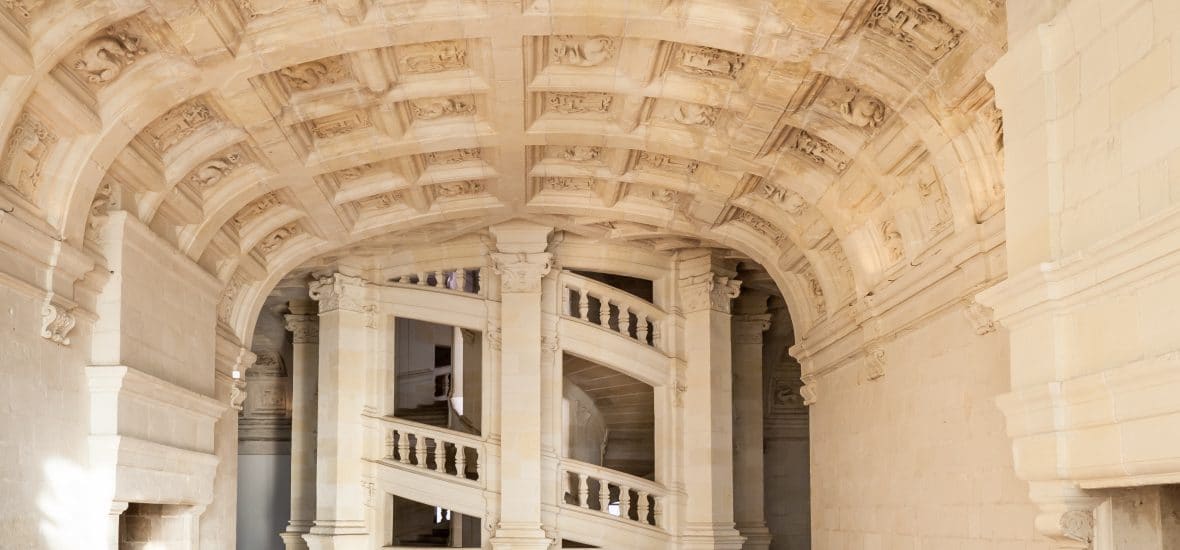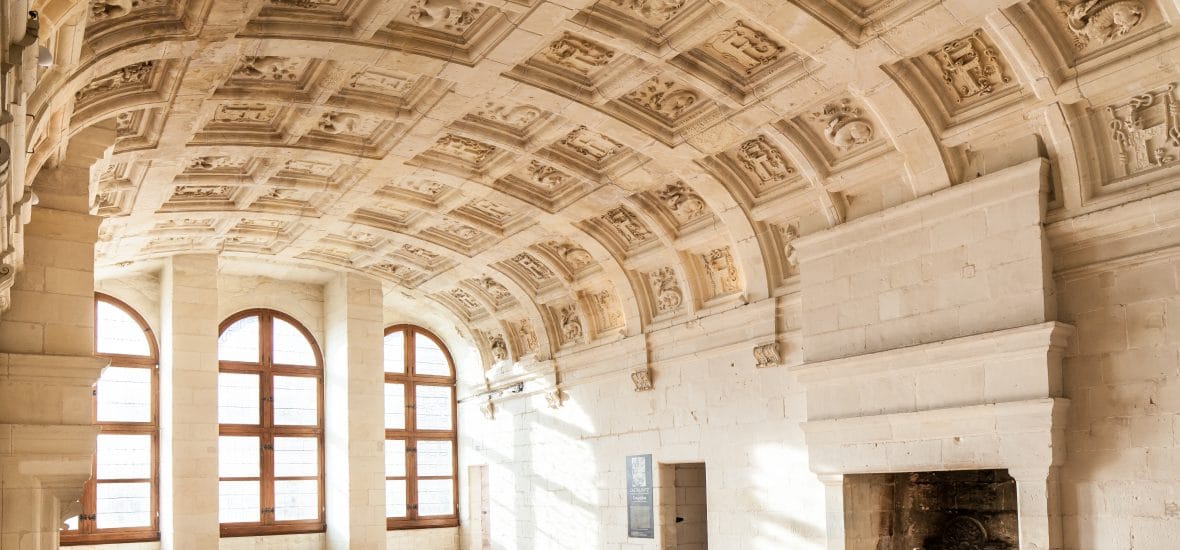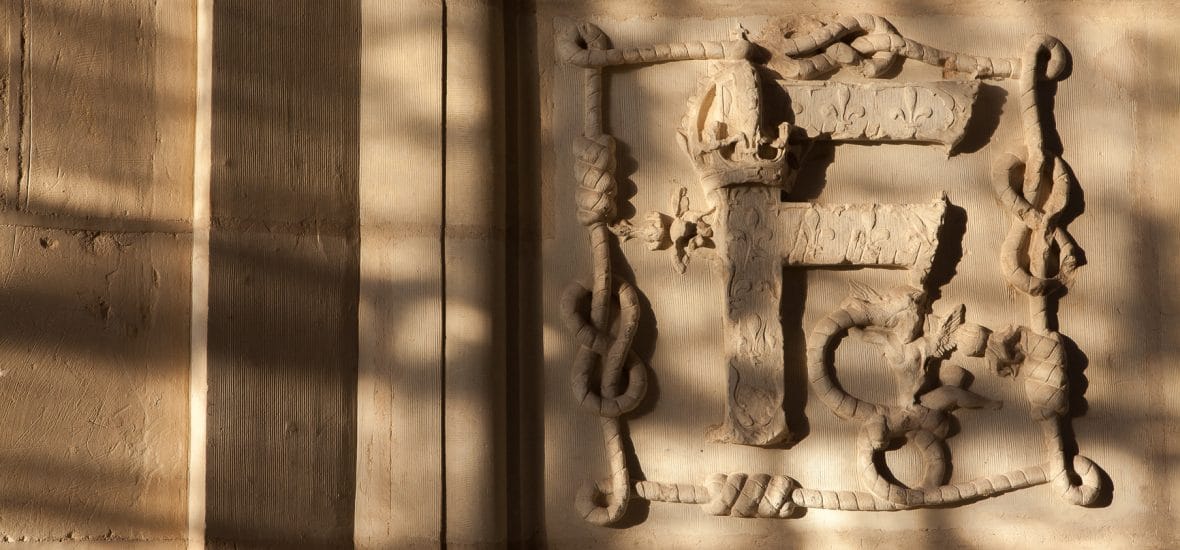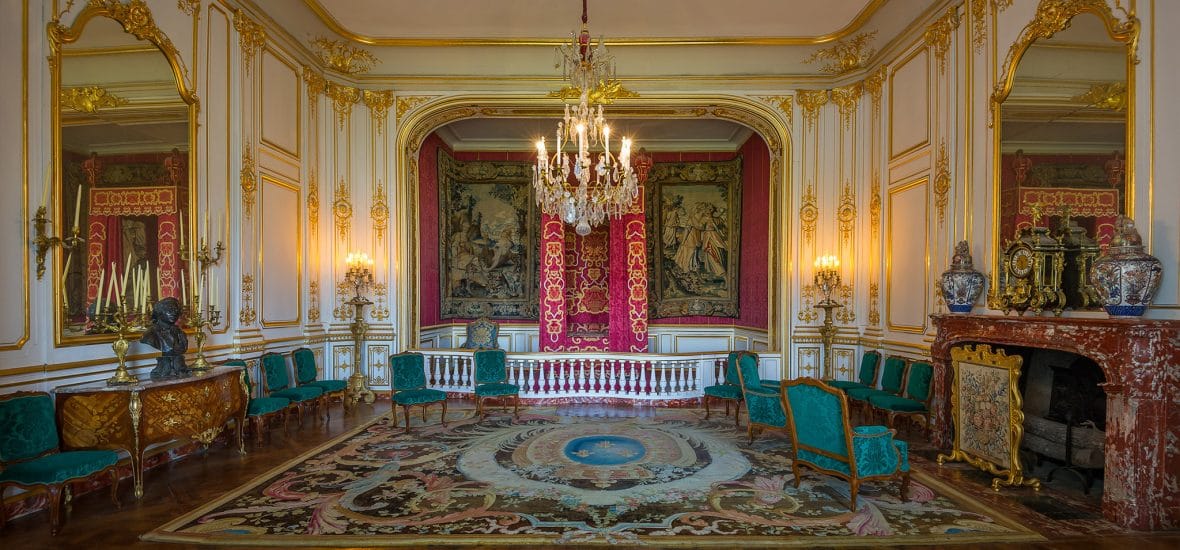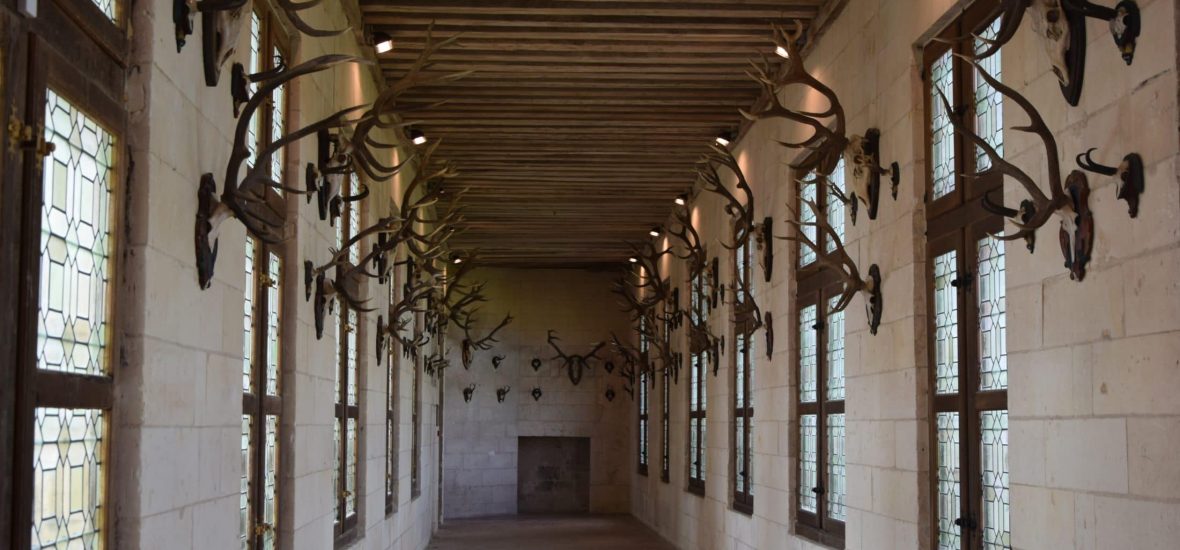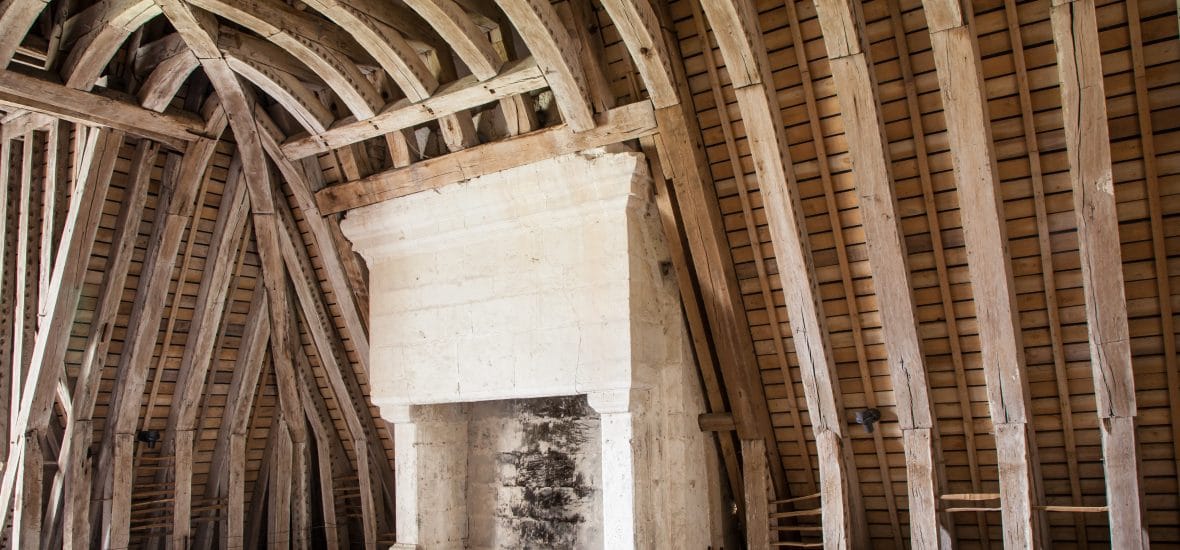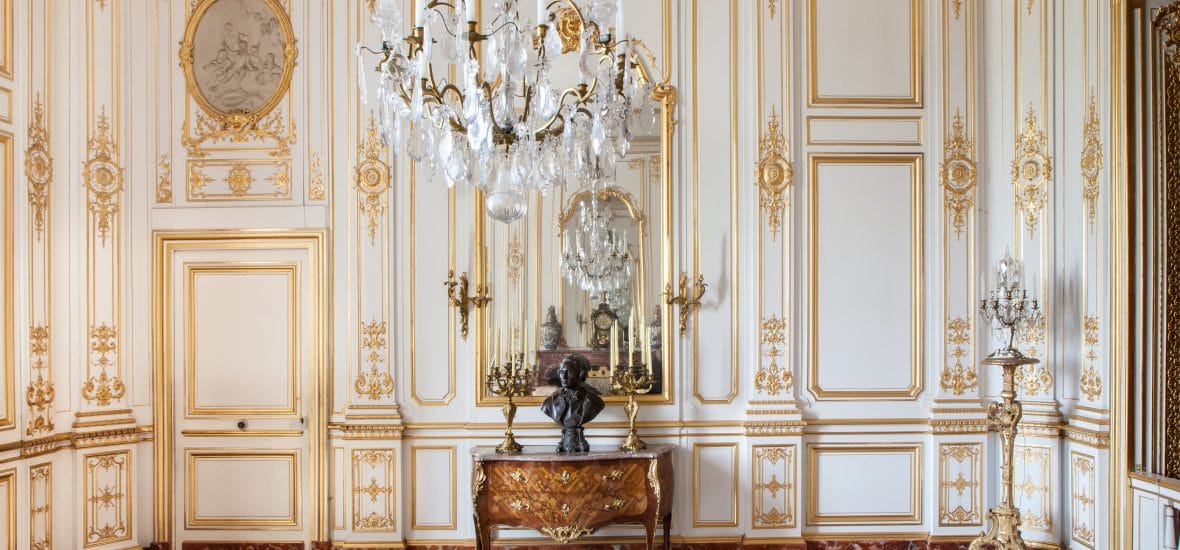In the center the main building awes the visitor with the sheer mass of its four monumental corner towers.
It is known as a “donjon” (“keep”, in English) in reference to medieval castles, and as a symbol of military power.
Inside the keep, four spacious vestibules form an equal-arm Greek cross, the center of which is occupied by the renowned double helix staircase. This centered plan was previously unknown in any French royal palace; after all, cross plans are usually reserved for religious buildings. As an architectural reference, it indicates the sacred status of the king of France.
Due to the cross plan, the four living quarters on each floor of the keep are totally the same. Only the two opposed wings – the eastwards royal wing, and the westwards Chapel wing – differ from one another. These two sections can be reached starting from the court by means of the open corner staircases or the galleries on the floors.
Visits revolve around exploration of the three floors of the keep; after ascending the grand central staircase the visitor will discover the wings, strolling through the galleries connecting them to the donjon.
The buildings that seal off the court form a low enclosure of which the covering and uses have varied over the centuries; first functioning as terraces masking the unfinished kitchens and utility rooms, from the 17th through the 19th century they were mansard-roofed to help shelter the domestics and attendants residing above the kitchens and the stables.

